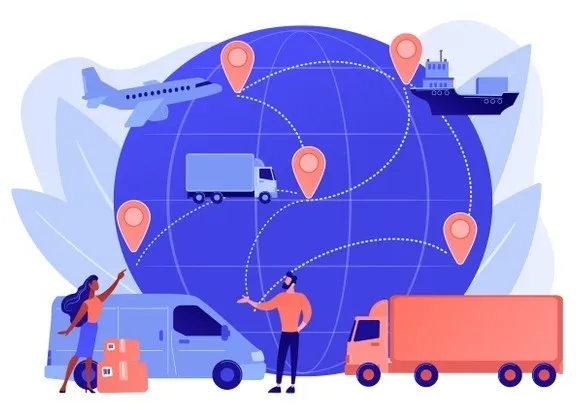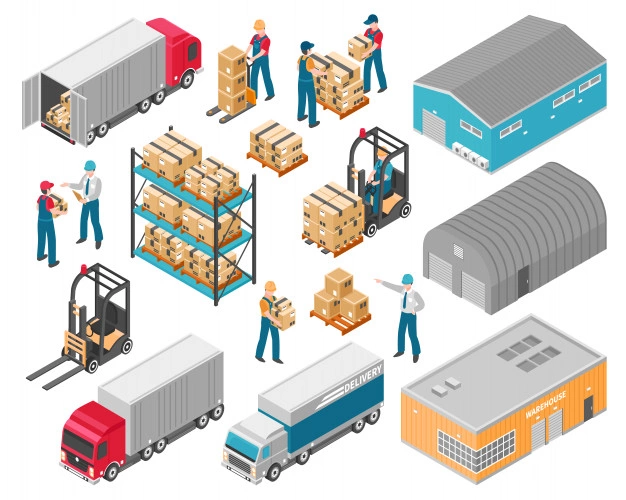The Supply Chain Industry
The past few years have seen a rise of many new challenges to the supply chain and distribution industry brought on by the pandemic. As a result, supply chain and distribution businesses are becoming increasingly complex to manage. Notwithstanding these challenges, new opportunities open up where the industry can seize the moment and grow.
While D2B has thrived in the past, D2C is facing a big challenge to disintermediation from powerful new entrants. By the very nature of wholesale distribution businesses, profit margin has been a critical factor that determines a company’s revenue and overall profitability. To remain competitive, many businesses are being forced to look at ways to cut their pricing in order to remain competitive as inflation is an issue. Research shows that a 1% decrease in price requires the company to increase its sales by nearly 6% to achieve the same profitability.

Supply Chain Challenges
Besides product complexity, manufacturers and distributors face challenges with increasing regulatory policies dealing with customer protection, circular economic trends, national mandates and product traceability.
To respond to increased competition and disintermediation, manufacturers and wholesale distributors need quality products, superior stock availability, shorter delivery times, and flawless execution of operations.
Faced with these myriad disruptive forces, the industry is aggressively embracing technology – for data-driven decision-making, more responsive supply chain management, better overall visibility, and differentiating customer experiences – in order to thrive.
The speed and efficiency that businesses and consumers have become used to, have put a strain on distributors to become more efficient. They must transform their business to be easier to do business with. In addition to responding to change, they must be able to offer additional services, with increased levels of personalization, the cost of which impacts their bottom line.
The speed and efficiency that consumers are used to receiving in their personal lives has put a strain on distributors to become easier to do business with, offer additional services, and increase levels of personalization, all potentially at the cost of their bottom line.
Challenges continue to emerge as more competitors enter the B2B space with a sharp focus on disrupting the low end of the market with no-frills, low-cost offerings.
Digital Transformation
Building differentiated value-added services is the only way to fend off competition from traditional players as well as online distributors.
From the data and application integration perspective, which is a critical enabling technology in all this, there is also an expanding role of APIs, AI, robotics and other technologies for streamlining the wholesale distribution ecosystem. These are rapidly becoming essential to create significant economic value as the entire industry undergoes rapid digital transformation.
Based on these tech trends, plus the ongoing disruptions from China tariffs and COVID-19, the wholesale distribution industry is facing several difficult challenges.
Continuous investment in a digital strategy that focuses on digital transformation initiatives is the only way forward!

Talent Acquisition
Digital skill is one critical area where there’s just not enough talent to support industry initiatives. Many business executives say they’ve had trouble recruiting staff with the right digital skills. Only a small percentage of them believe that college graduates have the right digital skills to work in the modern age.
Turnover in warehouse staff is another growing challenge. Top talent is proving hard to come by in some areas. There’s a noticeable spike in pay for staff in warehouses that try and attract new people. The current situation shows vacancies for ‘tens of thousands’ of people needed as the economy struggles to recover from the impact of COVID-19.
Looking Ahead
Distribution spans many large market segments, ranging anywhere from grocery and food-service to furniture and home furnishings. In the United States alone, wholesale/distributor sales are approximately $3.2 trillion and growing.
The industry is under major disruption from China tariffs, rising shipping costs, the growth of e-commerce, and the increasing desire of manufacturers and retailers to completely disintermediate the wholesale distribution channel.
Internet giants have entered the fray, challenging traditional distributors. Large players such as Amazon and Alibaba have entered the fray causing severe disruption to the way wholesalers have been doing business. Price transparency and low barriers to switching suppliers are the new normal.

The level of efficiency, accuracy and speed that modern wholesale distributors require today is critical for success. Technology, particularly automation, is one of the key methods for organizations to take that next digital transformational step to remain competitive.
Looking ahead, digital transformation in distribution and wholesaling that adds value for customers, will continue to play an increasingly important role in the foreseeable future. It is the key component of strategy that will determine the future success of organizations engaged in distribution.
WorkforceAI
WorkforceAI meets the challenges of digital transformation in the supply chain industry by facilitating the creation and management of competent agile-enabled teams working collaboratively.
Our process can lower costs and reduce time-to-market of technology adoption while retaining quality, even in large projects delivering fully operational supply chain distribution systems.
Contact Us
Contact us today for a free consult on making your digital initiatives more workforce-ready and responsive.
